Back to the Future: Rotwild RDH P1
Rotwild is the epitome of the niche, German mountain bike company, in many ways. They have always plowed their own furrow. Back in 1996 when they were little more than two automotive engineering students with heads full of ideas, they set their stall out with this bike—the RDH1 concept bike. Sadly, this bike never made it to production for a whole host of reasons, but as a view of what they thought a mountain bike could be, it will surely still resonate with many people today, 20 years later…
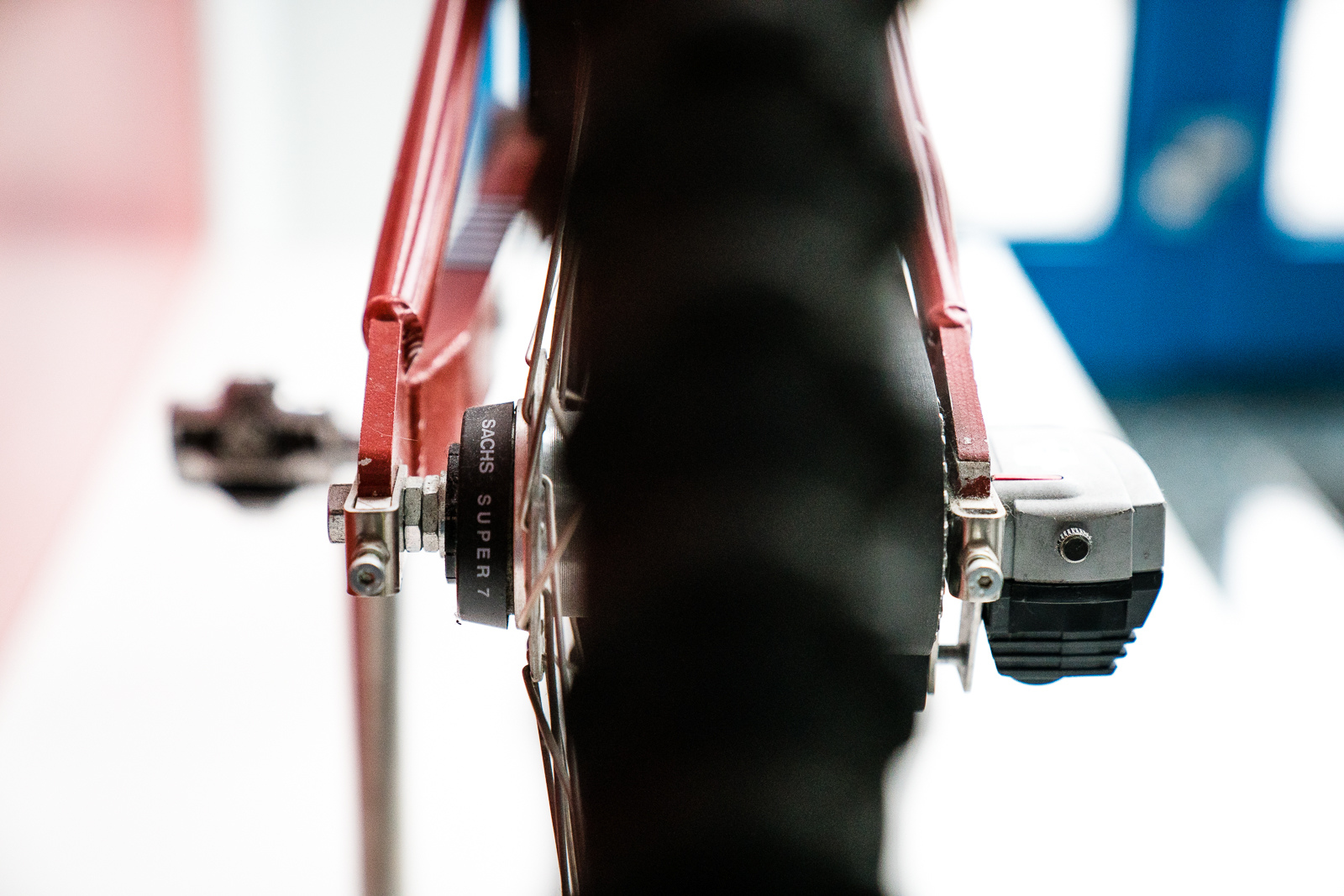
If we are to nit-pick, it's not clear whether an internally-geared hub and an external electronic controller would help to reduce the unsprung mass at the rear wheel.

Sachs (now SRAM, since their merger) have been making internally geared hubs for decades—but the technology has never really gained widespread acceptance in mountain biking for one reason or another.

They were keen on the idea of disc brakes, at least at the front, although these Sachs brakes never really caught on. This was also a time before standardised brake mounts—so check out the custom mounting solution.
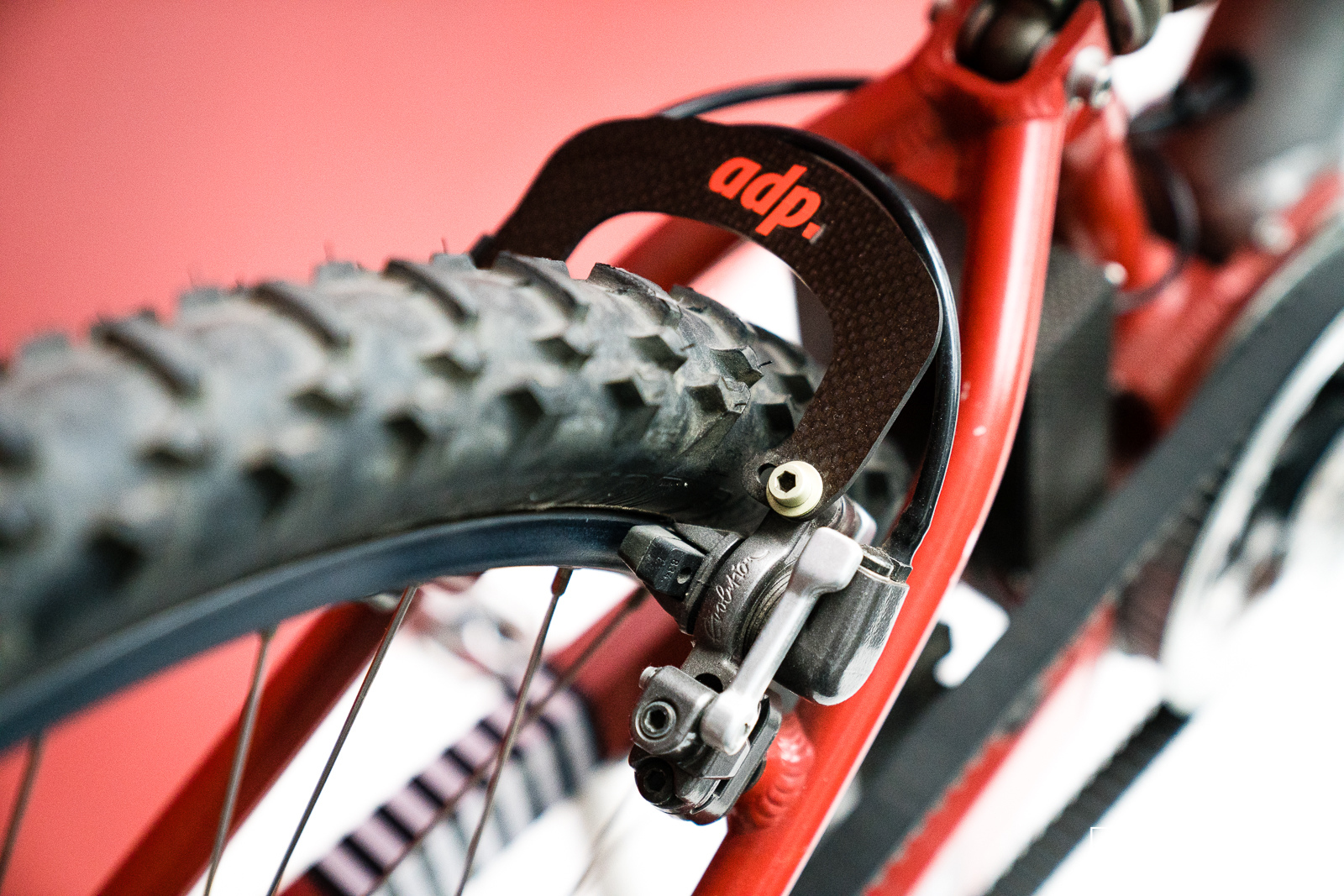
These brake boosters were one of ADP Engineering's original products. For those too young to have ridden with Magura rims brakes, at the time the brakes were too strong for the frames, so the stays would flex outwards as you braked. To counter this, you could mount a brake booster to reinforce your frame.
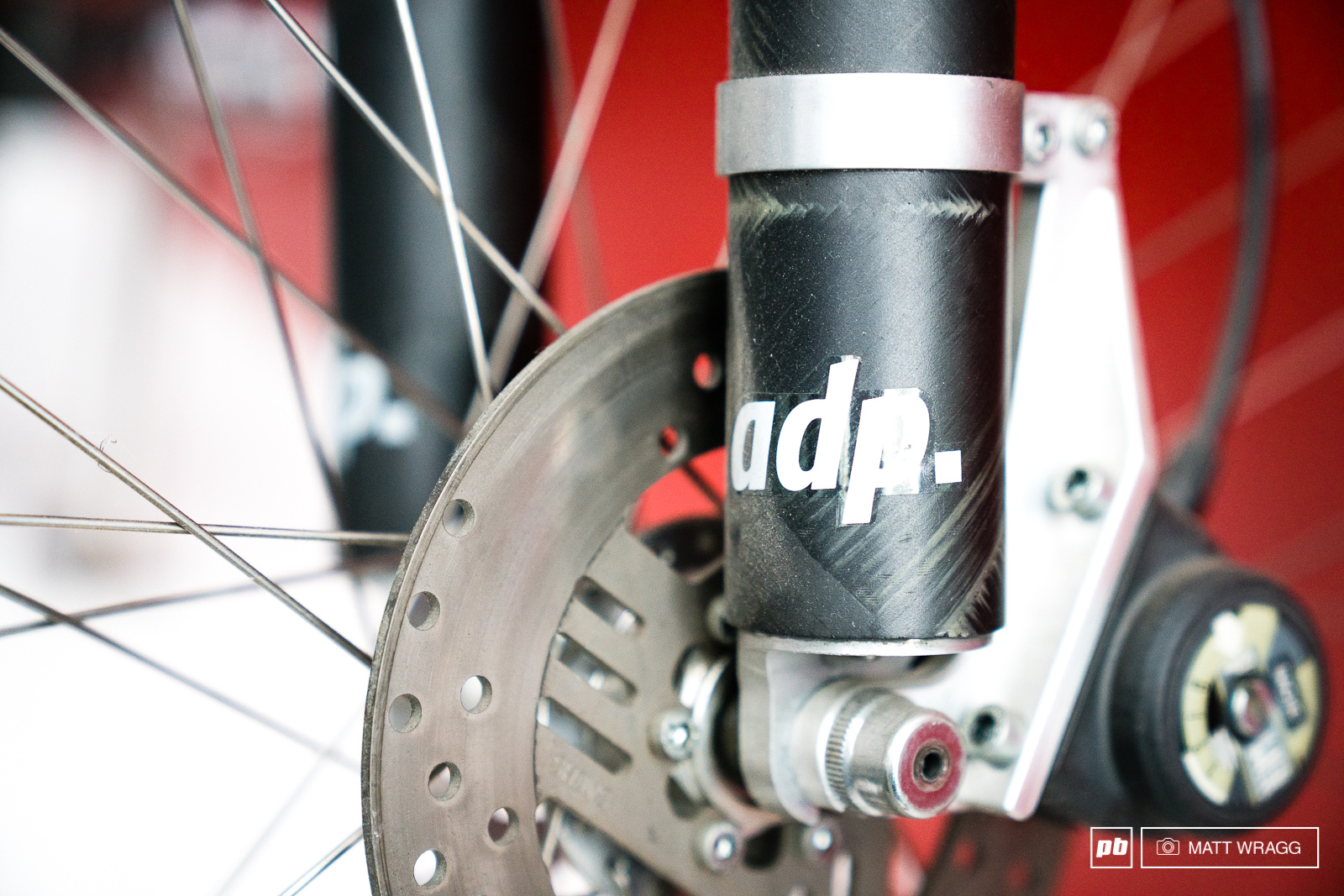
This carbon fork never got beyond this concept stage, but this was a fully working fork, although these days it is pretty much solid, it hasn't stood the test of time too well. It is worth noting that, despite massive advances in carbon since this was conceived, fork manufacturers have not found a better material than magnesium for the task and carbon has never really caught on.
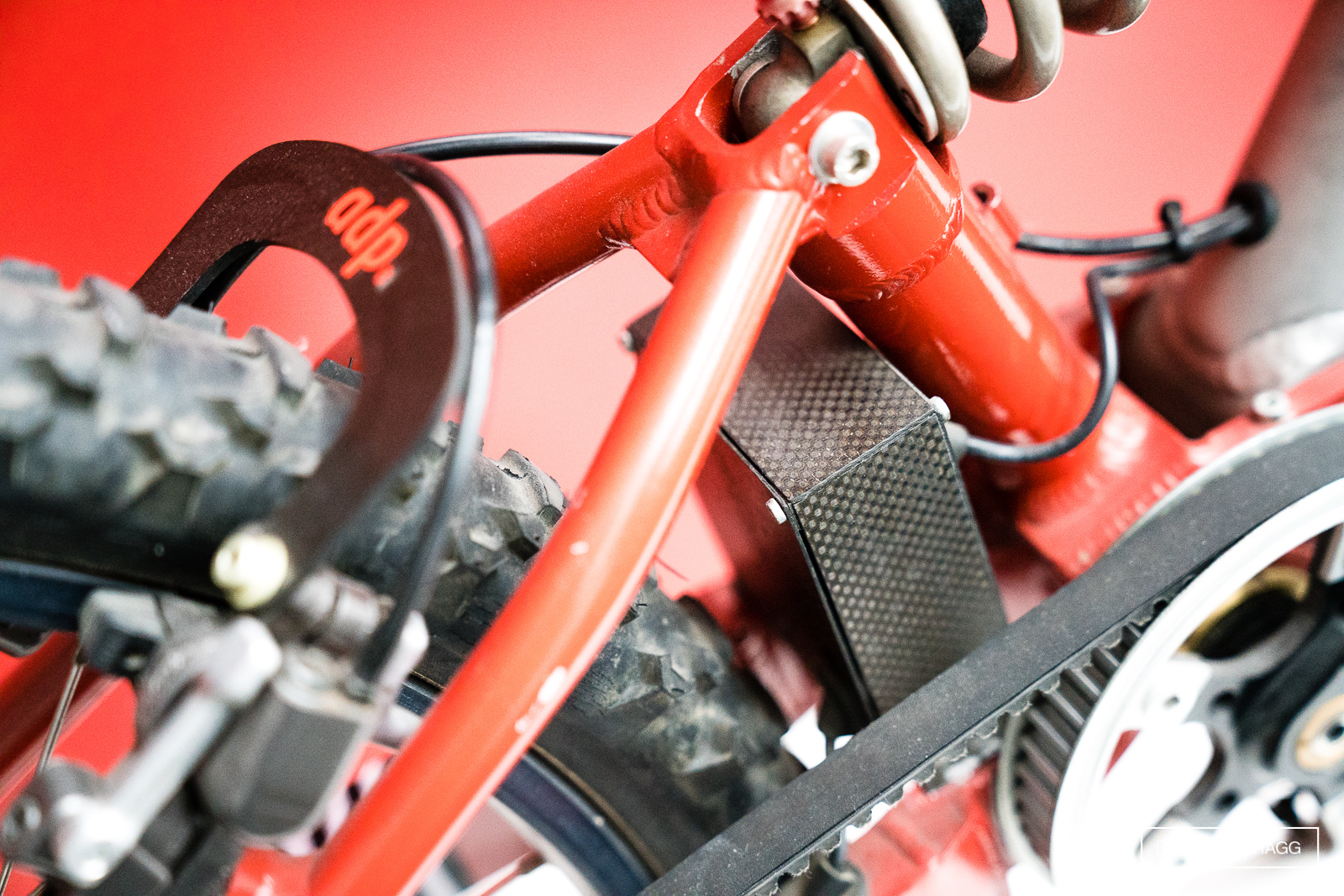
Miniaturization of electronics was still in its infancy in 1996—you just need to compare a computer of the time to an iPhone to understand the advances. With a modern full suspension bike this placement would be problematic, but with a URT the rear triangle is static, so this layout would be fine.
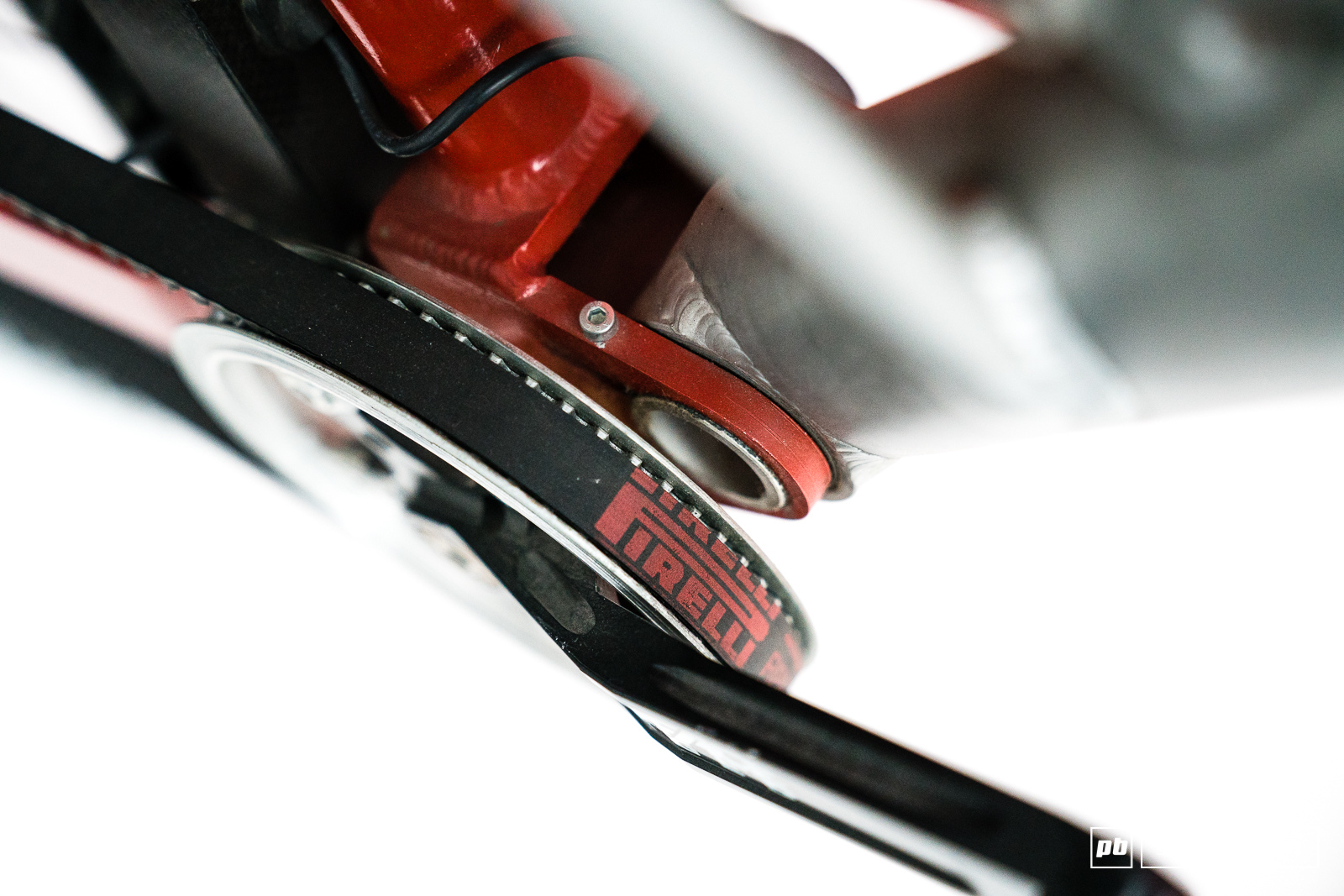
Another advance since this bike was conceived is the carbon belt drive. These are standard timing belts from a car, which would work OK for a little while, but out in the real world, they simply wouldn't have been durable enough.

They constructed a special chainring to accommodate the belt and mounted it to a standard Race Face crank.
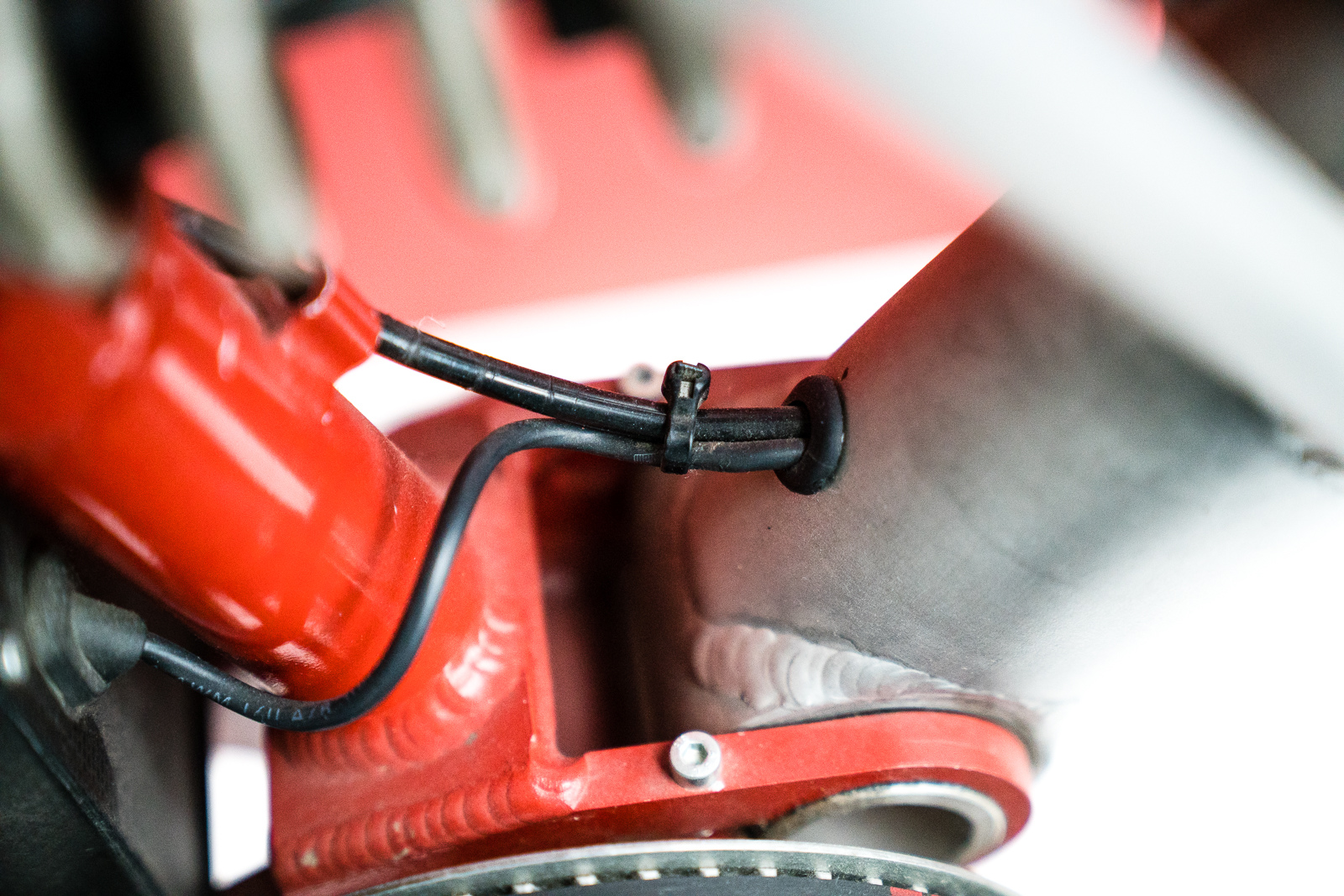
While this may look normal now, internal cable routing was virtually unheard of in 1996. Also, this angle should give those too young to remember URTs a better idea of how they worked - the rear triangle was a solid piece that pivoted just ahead of the chainring. The problem with these is that the drivetrain was constantly moving under the rider, which made for a horrific pedaling experience. Also, the unsprung mass was incredible - you also have the cranks included in that weight with this design.
Author Info:
Must Read This Week
Sign Up for the Pinkbike Newsletter - All the Biggest, Most Interesting Stories in your Inbox
PB Newsletter Signup

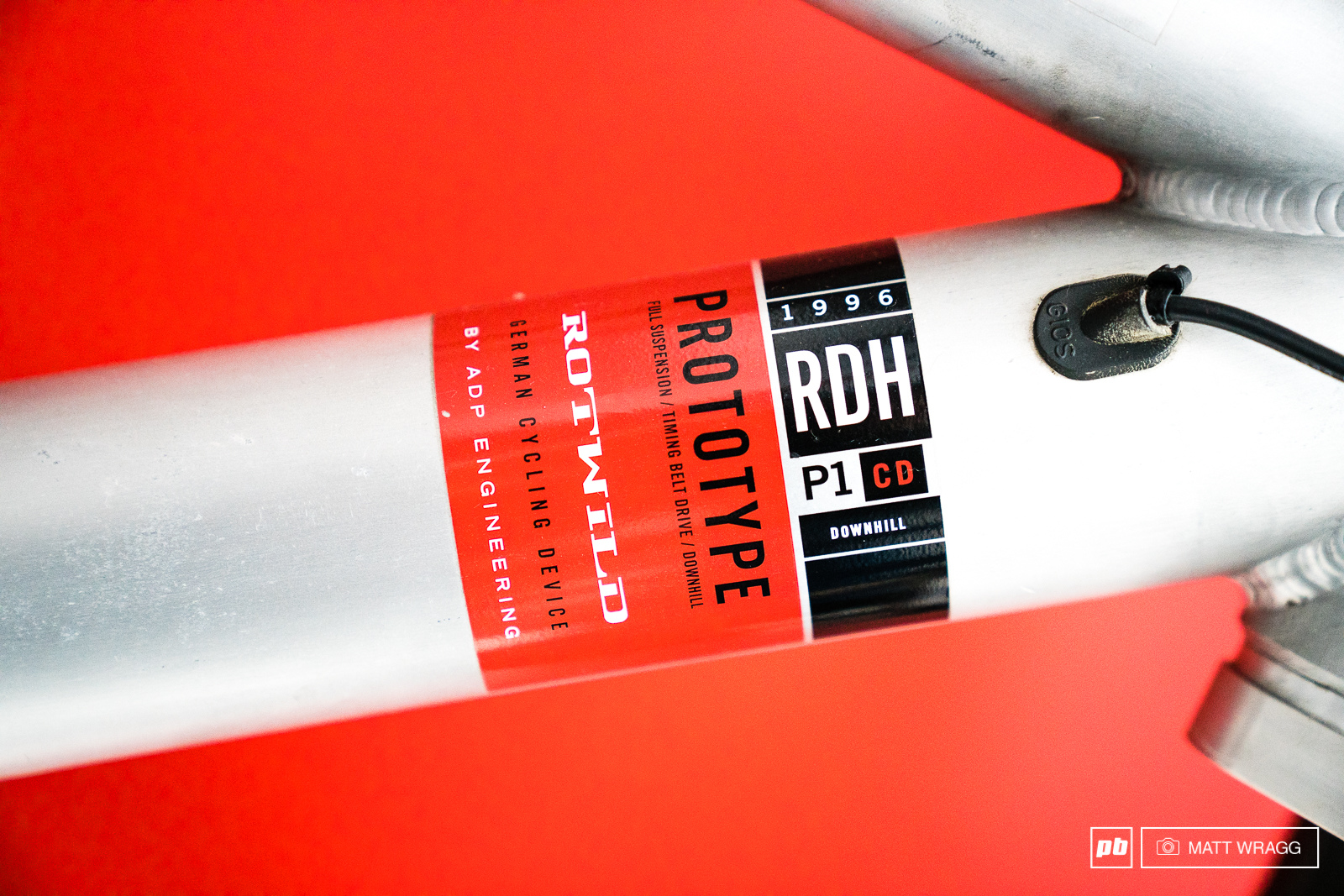

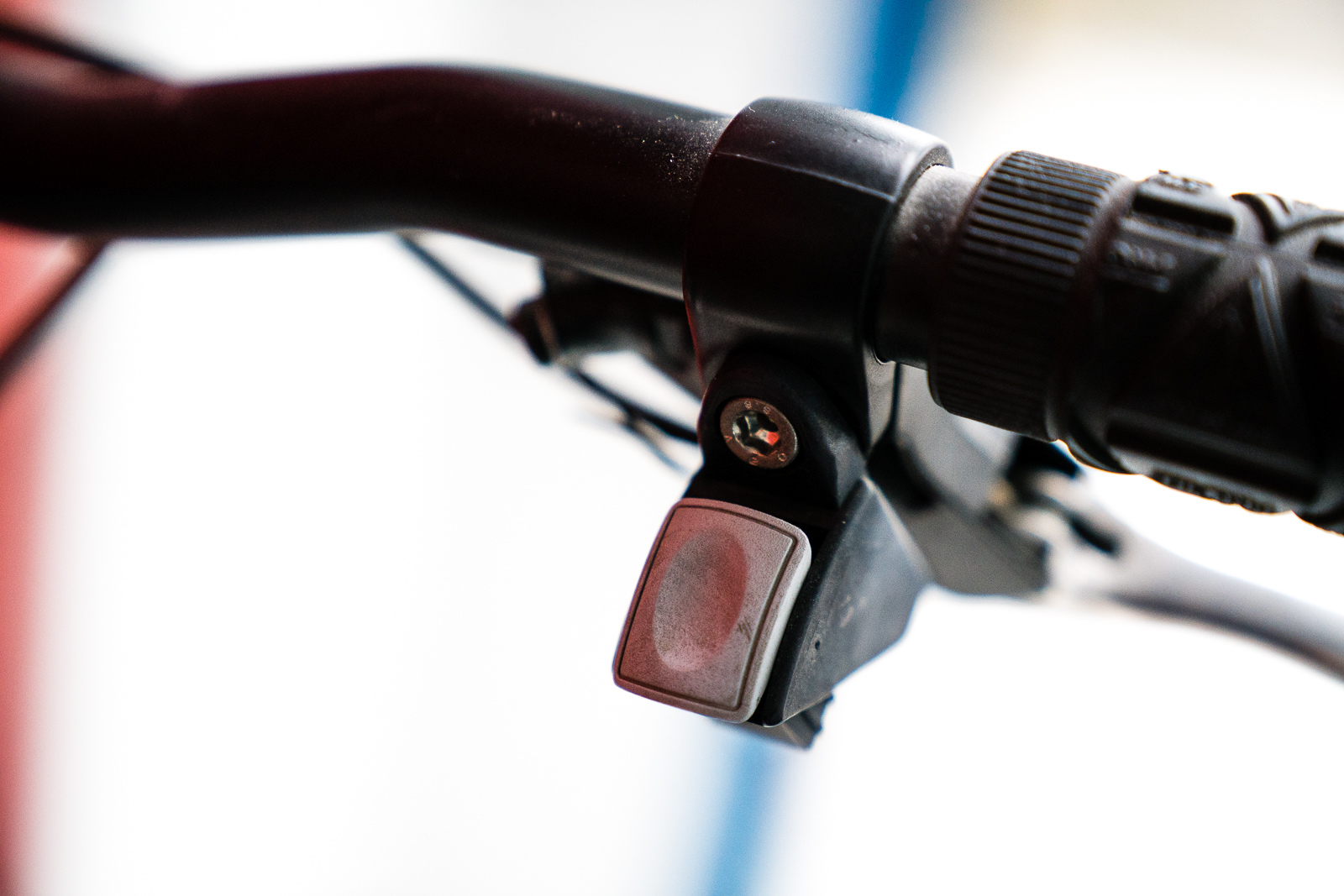
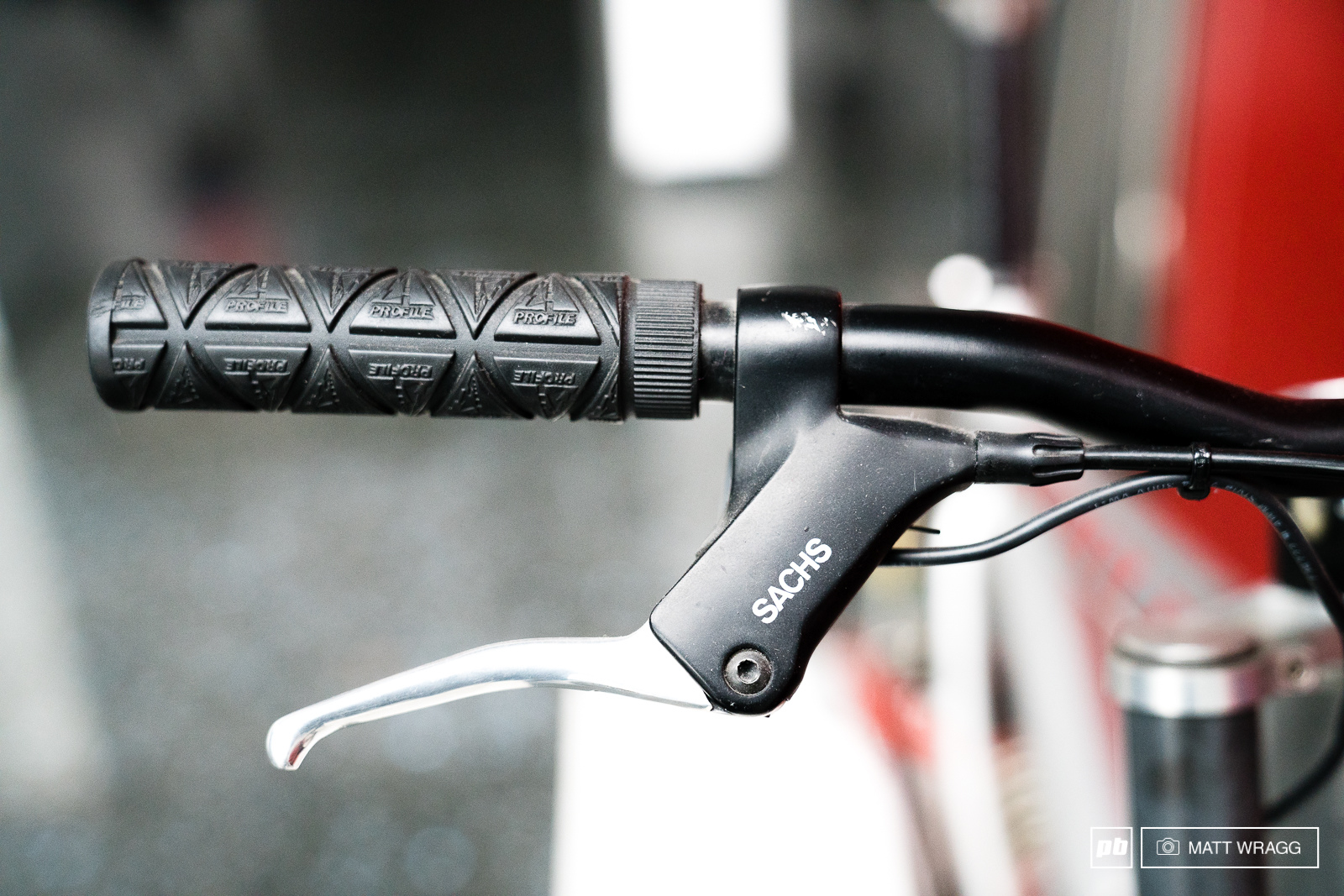
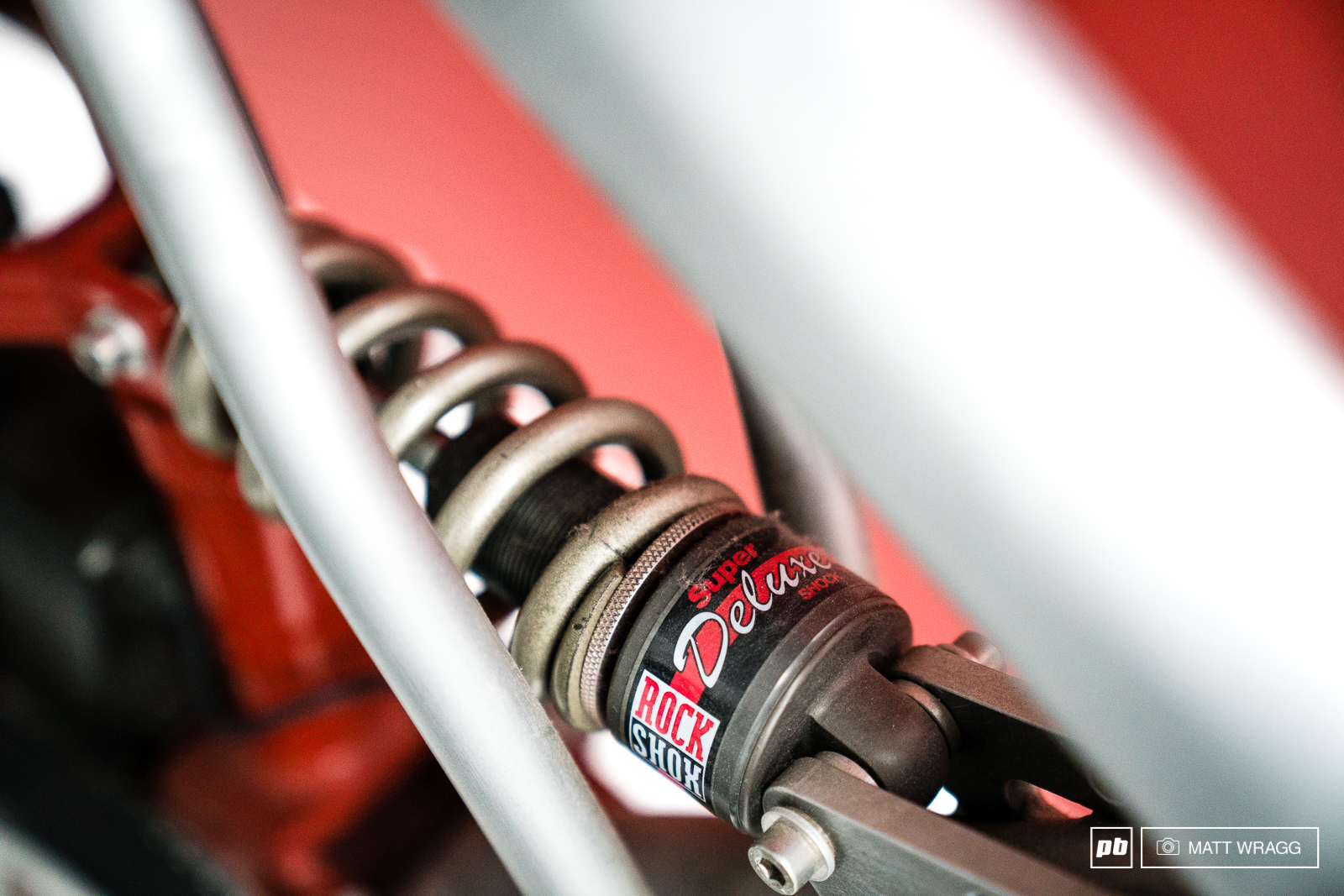

Clearly a downside to an article written by someon only 34 is missing out on a whole decade when internal cable routing was everywhere in mountain biking. My first mountain bike in 1987 had it, and that was a low end model which had trickled the feature down from higher end bikes. It was around even earlier for road bikes.
I can't remember the name of it but I bet it was cool sounding.
Surprised you can't see the difference.
The belts are strong enough to rotate the water pump shaft, the power steering pump shaft, the alternator drive wheel, and often the A/C pump as well, which on most engines represent about a dozen horsepower of energy.
You've never looked under a rally car or truck and seen how exposed much of the engine is have you ? Or even worked on just an ordinary car engine driven on roads for a long time. Well I have, and timing/accessory drive belts have no special covers or shielding to protect them from dirt/debris coming up from the underside. There's a reason all the best hand cleaners are sold in the automotive sections of stores. Working on engines is a very messy affair.
Chrysler did a few T-Belt driven motors, like the 3.5L V6 from the late 90s, and there's several more mostly from japan, but it's not an ideal arrangement and usually has to do with space confinements. The benefit is that it's a fail safe as the T-Belt lasts longer than accessory belts. I can't think of a single car that runs all accessories from the T belt, thankfully.
Saabs 9000, 9-3 and 9-5s used a single belt to drive all the accessories. 900's had two belts. The belt is driven by a pulley from the crankshaft so technically it has to deal with whatever torque loads the engine is capable of putting out. A lot of other european car makers use single belt setups. Multiple belt setups went the way of the dinosaur for two reasons.
#1 packaging... ie fitting everything into ever shrinking engine bays. In a saab 900, the 4 cylinder engine was longitudally mounted and canted 45 degrees (to lower the hood profile), with the transmission and clutch at the front. There was enough room around the engine that combined with an easily removed hood, other than a handful of procedures, you could do almost anything with minimal fuss. A complete clutch replacement was about 1 hour total for example. Thus a 2-belt system wasn't a problem as there was plenty of room avalable.
Later model saabs went to transverse engines and shrank the engine bay to make the cabin space larger and increased the amount of structure used for crash safety. To simply change the headlight bulbs on my 9-3 requires a cold engine and a lot of wrist contorsions (which is still better than a lot of cars today that require the entire front grill and bumper be removed to pull the complete headlight assemblies out). To replace the accessory drive belt on my 9-3 last summer required me to pull the right front wheel off, remove the inner fender lower wall panel, make a tool for taking the pressure off from the belt tensioner idler arm, and then spend an hour snaking the belt into place with only about an inch of clearance between the pulley wheels and the upper fender wall structure. I have to drive my AC, Water pump, PS pump and Alternator off that one belt.
Saabs have used direct ignition modules since ohh.... the early 90s... so there is no "timing" belt as americans might think of them unless you're dealing with older models without the DI cassette There's a crank position sensor on the engine crank pulley which sends a signal to the engine computer as to when to spark the motor. Its all programmable and automatic and self-calibrates so it really never needs adjusting. The camshafts are chain driven and basically never need replacing/servicing. They also run in a constant bath of engine oil, and being at the top of the engine there's a "ticking" noise when your oil is low that long time saab owners will recognise LONG before the oil pressure/level light would ever come on.
The #2 reason is speciailized single-belt setups helps them control the parts chain better and prevents owners and disreputable mechanics/garages from just using any generic belt instead of an OEM approved one. This isn't done for more profit (the replacement belt costs about $40USD and lasts 100,000 kms on average) so much as preserving the reliability and proper functioning of the engine/accessories.
@Obidog: If I spoke about pottery, painting, prams or pregnancy, I wouldn't know where to start. Thankfully this is kind of in my wheelhouse.
I have now hit large deer in two different Saabs as the driver. a 1989 classic generation 900 and a 2002 9-3. The worst thing that has happened in the cabin between the two was I spilled a booster juice I had just bought only minutes before on the second collision. That was a head on, offset impact at 55mph with 400 pounds of large male buck with a six point rack. My gf in the car with me at the time didn't even know we'd hit a deer until I told her. She thought the bang noise had been a tire blowout. This is a consequence of a car maker designing for a MOOSE IMPACT to the windshield.
Top Gear had a saab tribute a couple years ago with Clarkson and May, its on youtube, you should watch it... listen for Clarkson talking about what an engineer from another swedish car maker told him. You can also look for "saab crash" on youtube... they've deliberately hit them with diesel train locomotives to show how well built they are. This is a hit that would have cut 99% of the car models in the world in half and severly injured if not outright killed the occupants and in this saab was fully survivable (albeit with some injury if your the driver).
www.youtube.com/watch?v=9IPrXAJ2Vj0
I have nightmares thinking about riding prior to V-brakes, Bombers, etc.
While this may look normal now, internal cable routing was virtually unheard of in 1996. Also, this angle should give those too young to remember URTs a better idea of how they worked - the rear triangle was a solid piece that pivoted just ahead of the chainring. The problem with these is that the drivetrain was constantly moving under the rider, which made for a horrific pedaling experience. Also, the unsprung mass was incredible - you also have the cranks included in that weight with this design.
Not quite dear. You see back then there were many URT designs with different approaches, influencing the way the suspension arm was reacting. Some worked bad (really bad), some were goon only when climbing (the infamous Clein Mantra) and some are still around, competing with the oh-so popular 4-bar linkage system…
Although the URT concept has evolved directing us to the floating bottom bracket systems, which operate really well among the rest of the high-end bikes.
To name a few, take a look at GT’s I-Drive, the Maverick American, Commencal’s DH bike (I am pretty sure it is Commencal, but I may be wrong) and more… I remember that there was a “patent war” back then at the 90’s on that system. I know that from first hand as I own an EU patent (category A) on this system…
I believe that the evolution of the URT design has a lot to offer yet, despite the forest of today suspension systems, that are mostly variations of the same design (yep, all this effort has produced some really good systems too..)
Many thanks for this article. A really pleasant read for us who have seen and ridden those bikes, as well for the kids who had no idea about the “wild days” of mountain biking (tons of crazy experimentation). I propose to add some interviews of the people who invent & created those early designs, it would make these articles even more interesting…
Keep on, we want more!
The funny thing is... platform shocks did exist from certain manufacturers, but they weren't called that at the time and were usually specific to certain brand/models. The Amp thru-shaft shock used a platform circuit in its design. A coil sping inside the shaft assembly held a ball bearing against the flow port (later years added a preload adjuster for the spring) which held the oil transfer port closed until a sufficient bump force was achieved to push it open. Other frame builders which sourced their mac-strut assemblies from Amp including the shocks (such as Dagger) thus got these early platform shocks also. The ones who went to someone else for a shock, or designed their own setups didn't (such as Noleen's being spec'ed by almost everyone including ohhh.... Mantis...nishiki, rocky mountain....etc).
www.balfa.wooyek.pl/balfa-wooly-bully-bobonum-nr.html
Je me souviens thoses Sach break WITHOUT power and IMPOSSIBLE to set-up properly, like the Pro-Stop!
Viva Magura en the 90!
Merci Pinkbike, it's good bikeporn from the past!
bicicentroslezama.com/PREMIUM/kaizer%20dh%2026%20azul.jpg
Surely outwards no? I've still got my old kona scab with an HS33 on the back when disc mounts weren't standard. The frame flexes so much when you unhooked the booster
In the recent article with the comparing the gear box and standard bike, it talked about the effect of unsprung weight and it's effect. Here you basically have the rider's mass involved!
www.pinkbike.com/photo/6985299
www.pinkbike.com/photo/9176825
www.pinkbike.com/video/212754
Nothing like video to show your design working as intended and that you KNOW more about the URT subject than a lot of forum warriors...
There was also I might add... the very famous Rocky Mountain Pipeline... a 6 inch travel URT using by many early freeriders (or froriders for the rocky team guys).
The video shows a guy dirt jumping and riding street without a helmet (or shirt), so they must give it extra street cred...
The irony of Deeeight calling anyone a 'forum warrior' is amazing...
but its a SUPERBIKE in 1996 :o
So many Sachs parts it should be considered a moped.
Also pink bike, the land of rotwild and gorejack reviews (pinkQ)